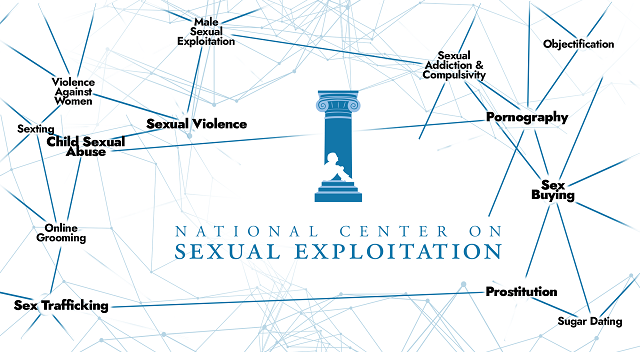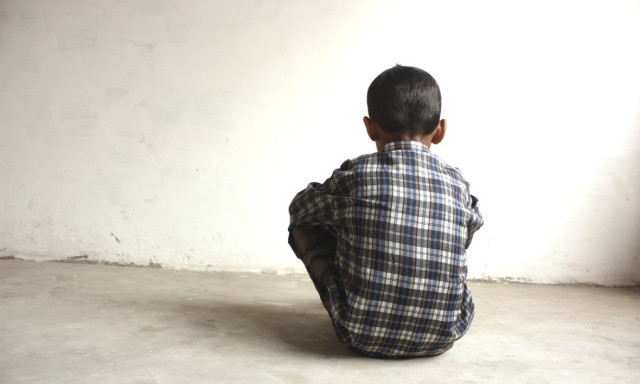Hamas on October 7th: The Teachings of Islam on Display — Part 1

On October 7, 2023, at about 6:30 AM, Hamas jihadists attacked Israel. These jihadists killed people attending an open-air music festival and people who lived in the Israeli communities close to the border.
By the time the Israeli military regained control of the affected areas in southern Israel, more than a thousand people – mostly civilians – had been killed, hundreds of houses looted and burned, and more than 230 men, women, and children taken hostage.[1]
The Hamas jihadists also displayed a callous savagery toward the people they engaged. Among the atrocities committed by these Hamas jihadists were:
- Beheadings
- Burning People Alive
- Killing Non-Combatants/Disbelievers
- Killing Women and Children
- Mutilations
- Rape of Non-Muslim Women
- Torture
There has been a great amount of outrage expressed about these atrocities. However, there has also been a large amount of support expressed for the Hamas jihadists. This support is found largely on college campuses and among Muslim populations.
Unfortunately, such support among Muslim populations should not be surprising. The Hamas jihadists were following the commands of Allah found in the Koran and the teachings and example of Muhammad, Islam’s Perfect Man and a timeless example that Muslims are expected to follow if they want Allah to admit them into Paradise (see Koran Chapter 33, Verse 21).
The jihadists’ attitude toward the Jews were formed by teachings of Islam such as these:
Koran Chapter 5, Verse 51: O you who believe! Take not the Jews and the Christians as Auliya’ (friends, protectors, helpers), they are but Auliya’ of each other.
Koran Chapter 5, Verse 82: Verily, you will find the strongest among men in enmity to the believers (Muslims) the Jews and those who are Al-Mushrikun,
Koran Chapter 9, Verse 30: And the Jews say: ‘Uzair (Ezra) is the son of Allah, and the Christians say: Messiah is the son of Allah. That is their saying with their mouths, resembling the saying of those who disbelieved aforetime. Allah’s curse be on them, how they are deluded away from the truth!
It was narrated from ‘Amr bin Shu’aib, from his father, from his grandfather, that the Messenger of Allah ruled that the blood money for the People of the Book is half of that of the blood money for the Muslims, and they are the Jews and Christians.[2]
Narrated Abu Hurairah: Allah’s Messenger said, “The Hour will not be established until you fight against the Jews, and the stone behind which a Jew will be hiding will say, ‘O Muslim! There is a Jew hiding behind me, so kill him.’”[3]
And why were the Hamas jihadists following Allah and Muhammad? Because the Koran commands them to do so, for example:
Chapter 33, Verse 36: It is not for a believer [Muslim], man or woman, when Allah and His Messenger, have decreed a matter that they should have any option in their decision. And whoever disobeys Allah and His Messenger, he has indeed strayed into a plain error.
Chapter 59, Verse 7: …And whatsoever the Messenger (Muhammad) gives you, take it; and whatsoever he forbids you, abstain (from it). And fear Allah; verily, Allah is Severe in punishment.
Chapter 4, Verse 115: And whoever contradicts and opposes the Messenger (Muhammad) after the right path has been shown clearly to him, and follows other than the believers’ way, We shall keep him in the path he has chosen, and burn him in Hell – what an evil destination!
Each of the atrocities listed above is supported by the commands of Allah found in the Koran and/or the teachings and example of Muhammad. Let’s examine each atrocity.
Rape of Non-Muslim Women
Islam allows the rape of non-Muslim women. A non-Muslim woman captured by Muslims during a battle falls under the category of those “whom your right hands possess.” She then becomes a slave to her Muslim captor and it becomes “legal” for him to have intercourse with her. This is authorized by Koran 4:24, which begins by talking about how Muslim men are forbidden from marrying (and having sex with) women who are already married, but then makes an important exception:
…except those (slaves) whom your right hands possess. Thus has Allah ordained for you…
The Muslim scholar Ibn Kathir explained the meaning of this verse:
The Ayah [verse] means, you are prohibited from marrying women who are already married, (except those whom your right hands possess) except those whom you acquire through war, for you are allowed such women after making sure they are not pregnant. Imam Ahmad recorded that Abu Sa’id Al-Khudri said, “We captured some women from the area of Awtas who were already married, and we disliked having sexual relations with them because they already had husbands. So, we asked the Prophet about this matter, and this Ayah was revealed…Consequently we had sexual relations with these women.”[4]
So instead of Muhammad prohibiting his Muslim warriors from raping the women they had captured in the area of Awtas, Koran 4:24 was “revealed” to him giving his Muslim warriors Allah’s authorization to also actually go ahead and rape them.
Muhammad’s attitude about how captured non-Muslim women could be treated was shown again in another eye-opening example in which Muhammad condoned the rape of female captives from the non-Muslim Mustaliq tribe.
In this story about the Mustaliq tribe we shall see that the only problem to be resolved was whether or not the ransom the Muslims were expecting for these particular female captives would be affected if those captives were returned pregnant. In response to the question from his Muslim warriors about whether they should therefore engage in coitus interruptus with their soon-to-be rape victims, Muhammad, instead of prohibiting the rapes, merely said that coitus interruptus would not matter because every soul that was destined to be born would be born:
Abu Sirma said to Abu Sa’id Al Khudri (Allah he pleased with him): O Abu Sa’id, did you hear Allah’s Messenger (SAW) mentioning al-‘azl [coitus interruptus]? He said: Yes, and added: We went out with Allah’s Messenger (SAW) on the expedition to the Bi’l-Mustaliq. We took captive some excellent Arab women. We desired them, for we were suffering from the absence of our wives, (but at the same time) we also desired ransom for them. So we decided to have sexual intercourse with them but by observing ‘azl…But we said: We are doing an act whereas Allah’s Messenger is amongst us; why not ask him? So we asked Allah’s Messenger (SAW), and he said: It does not matter if you do not do it, for every soul that is to be born up to the Day of Resurrection will be born.[5]
So Muhammad gave his approval to the rape of these “excellent Arab women.” It is an interesting side note that coitus interruptus was one of the “ten characteristics” that Muhammad disliked.[6]
It should therefore come as no surprise that the founders of the four major Sunni schools of Islamic Sacred Law agreed that
…when a married woman becomes a prisoner of war without her husband, her contract of marriage with her husband ends, and her new master has the right to have sexual relations with her after the birth of a child if she is pregnant, or after waiting a while to confirm the status of her womb if she is not apparently pregnant.[7]
Has there been any change in the understanding of this verse over the centuries? The answer is “No.” The 20th century Koran commentary Tafsir Ahsanul-Bayan explained Koran 4:24 this way:
The historical background of the verse is that when pagan women were captured by Muslims in battles, they disliked having intercourse with them because they had husbands. The Companions asked the Messenger of Allah about it. Thereupon, this verse was revealed. The verse allowed the Muslims to have intercourse with pagan women if they were captured in battles even if they had husbands, providing their wombs have been cleansed, that is, after one menses or, in case they are pregnant, after the delivery of the child.[8]
Although it is claimed that the Muslim warrior is not allowed to rape his captive until he has waited to make sure that she is not pregnant, as we saw above this was ignored even in Muhammad’s time. Here are additional examples of Muhammad handing out newly captured non-Muslim women to his Muslim warriors:
- After the defeat of the Jewish Banu Qurayzah tribe, Muhammad divided up that tribe’s “property, wives, and children” among the Muslims, with the exception of some of the women that he sent to Najd and to Syria to be sold for horses and weapons.[9]
- After the defeat of the Jews at Khaybar, Muhammad had the women of Khaybar “distributed among the Muslims.”[10]
- After the non-Muslim Hawazin tribe was defeated, Muhammad gave Ali, ‘Umar, and ‘Uthman (all later “Rightly Guided” Caliphs) each a woman from among those captured. ‘Umar then gave his to his son.[11] Muhammad gave other “slave girls” to some of his Muslim warriors, who, along with ‘Uthman, then had “intercourse” with their slaves. It was reported that ‘Uthman’s slave-girl “detested him” after the “intercourse.”[12]
So we can see that the commands of Allah in the Koran and the teachings and example of Muhammad fully support the raping of non-Muslim women by the HAMAS jihadists.
Ibn Salih Al-Uthaymin, a 20th century Muslim scholar, summed it up well:
But if the dividing (of the Ghanimah) [spoils of war] takes place, and the woman from them ends up as a slave woman, then she becomes property of the right hand. The person can have intercourse with her as a right hand possession, which is permissible and there is nothing wrong with this.[13]
On October 7th Hamas jihadists were committed to following those commands of Allah and those teachings and example of Muhammad.
Haim Outmezgine, commander of a special unit of Zaka, which collects the remains of the dead, told The Sunday Times it was clear Hamas terrorists aimed to sexually assault women.
“We collected 1,000 bodies in ten days from the festival site and kibbutzim,” he said.
“No one saw more than us. It was clear they were trying to spread as much horror as they could — to kill, to burn alive, to rape … it seemed their mission was to rape as many as possible.”[14]
Israeli officials pointed to a Hamas pamphlet discovered on Nov. 2 that gives detailed instructions about how to pronounce phrases in Hebrew including “raise your hands and open your legs” and “take off your pants.”
During interrogations, captured Hamas militants talked about raping women and children as a Hamas tactic of war. “To have our way with them, to dirty them, to rape them,” said one Hamas militant during a videotaped interrogation.[15]
Killing Women and Children
It is commonly claimed that Muhammad had issued a general prohibition against the killing of women and children, and that this was established Islamic Doctrine. There are two popular hadiths that are often used to support this claim:
It has been reported from Sulaiman b. Buraid through his father that when the Messenger of Allah (may peace be upon him) appointed anyone as leader of an army or detachment he would especially exhort him to fear Allah and to be good to the Muslims who were with him. He would say: Fight in the name of Allah and in the way of Allah. Fight against those who disbelieve in Allah. Make a holy war… do not kill the children.[16]
And
Ibn ‘Umar narrated that a woman was found killed in one of the expeditions of the Messenger of Allah, so the Messenger of Allah rebuked that, and he prohibited killing women and children.[17]
So according to the first hadith, whenever Muhammad appointed anyone to lead a Muslim army or detachment, he would issue an order that children were not to be killed. And the second hadith states that Muhammad prohibited the general killing of women and children.
However, Muhammad never issued such sweeping prohibitions.
For example, when it came to women criticizing him, Muhammad had no problem with such women being killed:
- “Ibn ‘Abbas told us that a blind man had a female slave…who reviled the Prophet and disparaged him, and he told her not to do that, but she did not stop…One night she started to disparage and revile the Prophet, so he took a dagger and put it in her stomach and pressed on it and killed her…The next morning mention of that was made to the Prophet and he assembled the people and said: ‘By Allah, I adjure the man who did this, to stand up.’ The blind man stood up…and he came and sat before the Prophet. He said: ‘O Messenger of Allah, I am the one who did it. She used to revile you and disparage you, and I told her not to do it, but she did not stop…Last night she started to revile you and disparage you, and I took a dagger and placed it on her stomach and I pressed on it until I killed her.’ The Prophet said: ‘Bear witness that no retaliation is due for her blood.’”[18]
- It was narrated from ‘Ali that a Jewish woman used to revile and disparage the Prophet. A man strangled her until she died, and the Messenger of Allah declared that no recompense was payable for her blood.[19]
And when the actions of Muhammad are examined chronologically, one finds that instead of it being a general, all-encompassing prohibition issued by Muhammad, and therefore an established part of Islamic doctrine, the prohibition against the killing of women and children was a specific, situational prohibition based on Muhammad’s judgment at the time. At other times he actually advocated for or allowed the killing of women and children.
For the details about this, see my article “Muhammad and the Killing of Women and Children.”[20]
On to Part 2
In Part 2 we will examine more of the atrocities committed by the HAMAS jihadists.
AUTHOR
Dr. Stephen M. Kirby is the author of six books about Islam. His latest book is Islamic Doctrine versus the U.S. Constitution: The Dilemma for Muslim Public Officials.
SOURCES:
[1] “Interview: Building the Evidence for Crimes Committed in Israel on October 7,” Human Rights Watch, January 31, 2024, https://www.hrw.org/news/2024/01/31/interview-building-evidence-crimes-committed-israel-october-7.
[2] Muhammad bin Yazeed ibn Majah al-Qazwini, Sunan Ibn Majah, trans. Nasiruddin al-Khattab (Riyadh, Kingdom of Saudi Arabia: Darussalam, 2007), Vol. 3, No. 2644, p. 521.
[3] Muhammad bin Ismail bin Al-Mughirah al-Bukhari, Sahih Al-Bukhari, trans. Muhammad Muhsin Khan, (Riyadh, Kingdom of Saudi Arabia: Darussalam, 1997), Vol. 4, Book 56, No. 2926, p. 113. In another hadith Muhammad said that the Jews would hide behind stones and trees, and these stones and trees would call out,
Muslim, or the servant of Allah, there is a Jew behind me; come and kill him; but the tree Gharqad would not say, for it is the tree of the Jews.
Abu’l Hussain ‘Asakir-ud-Din Muslim bin Hajjaj al-Qushayri al-Naisaburi, Sahih Muslim, trans. ‘Abdul Hamid Siddiqi (New Delhi, India: Adam Publishers and Distributors, 2008),Vol. 8, No. 2922, p. 349.
[4] Abu al-Fida’ ‘Imad Ad-Din Isma’il bin ‘Umar bin Kathir al-Qurashi Al-Busrawi, Tafsir Ibn Kathir (Abridged), abr. Shaykh Safiur-Rahman al-Mubarakpuri, trans. Jalal Abualrub, et al. (Riyadh, Kingdom of Saudi Arabia: Darussalam, 2000), Vol. 2, p. 422.
[5] Sahih Muslim, Vol. 4, No. 1438, p. 373.
[6] Abu Dawud Sulaiman bin al-Ash’ath bin Ishaq, Sunan Abu Dawud, trans. Yaser Qadhi (Riyadh, Kingdom of Saudi Arabia: Darussalam, 2008),Vol. 4, No. 4222, p. 474.
[7] Abu ‘Eisa Mohammad ibn ‘Eisa at-Tirmidhi, Jami’ At-Tirmidhi, trans. Abu Khaliyl (Riyadh, Kingdom of Saudi Arabia: Darussalam, 2007), Vol. 2, Comments to Hadith No. 1132, p. 503.
[8] Salahuddin Yusuf, Tafsir Ahsanul-Bayan, trans. Mohammad Kamal Myshkat (Riyadh, Kingdom of Saudi Arabia: Darussalam, 2010, 2012 and 2013), Vol. 1, pp. 441-442.
[9] Muhammad ibn Ishaq, The Life of Muhammad (Sirat Rasul Allah), trans. Alfred Guillaume (Karachi, Pakistan: Oxford University Press, 2007), p. 466.
[10] Ibid., p. 511.
[11] Ibid., p. 593.
[12] Muhammad b. ‘Umar al-Waqidi, The Life of Muhammad: Al-Waqidi’s Kitab al-Maghazi, trans. Rizwi Faizer, Amal Ismail, and AbdulKader Tayob, ed. Rizwi Faizer (London and New York: Routledge, 2013), p. 462.
[13] The Clarification Regarding Intentionally Targetting Women and Children, At-Tibyan Publications, October 31, 2004, p. 73.
[14] “Hamas gang raped and beheaded women at rave massacre, fresh testimony reveals,” The Jewish Chronicle, December 3, 2023, https://www.thejc.com/news/israel/Hamas-gang-raped-and-beheaded-women-at-rave-massacre-fresh-testimony-reveals-blp0ghdl.
[15] Anna Schecter, “Their bodies tell their stories. They’re not alive to speak for themselves.,” NBC News, December 5, 2023, https://www.nbcnews.com/news/world/Hamas-rape-israeli-women-oct-7-rcna128221.
[16] Sahih Muslim, Vol. 5, No. 1731R1, pp. 162-163.
[17] Jami’ At-Tirmidhi, Vol. 3, No. 1569, pp. 341-342.
[18] Sunan Abu Dawud, Vol. 5, No. 4361, pp. 20-21.
[19] Ibid., No. 4362, p. 21.
[20] Stephen M. Kirby, “Muhammad and the Killing of Women and Children,” Jihad Watch, February 23, 2021, https://www.jihadwatch.org/2021/02/muhammad-and-the-killing-of-women-and-children.




